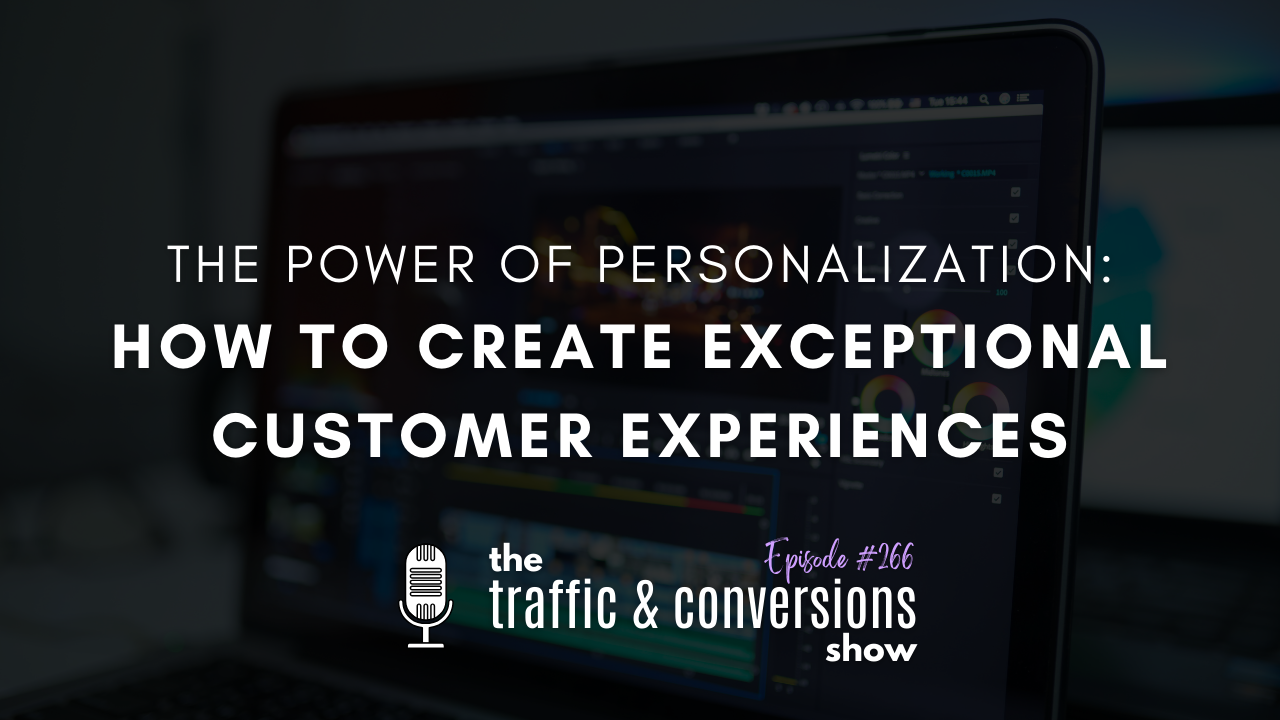Personalization has become a bit of a buzzword in recent years, and for good reason. In today’s business landscape, customers expect personalized experiences at every touchpoint, from the content they consume to the products they purchase. As data becomes more abundant, businesses have an unprecedented opportunity to meet these expectations and drive customer satisfaction and loyalty.
In this blog, we’re diving into the steps for successful personalization in business.
Step 1: Collect Relevant Data
Collecting relevant data is a crucial step for an effective personalization strategy.
Here are three tips to help you collect the most relevant data:
- Define your goals We want to be very specific and so it’s important to define clear objectives before you even start collecting data. Knowing what you want to achieve will guide your data collection efforts.So ask yourself questions like,What problem am I trying to solve? What insights do I need to make informed decisions? This clarity will prevent you from collecting unnecessary data that just won’t serve your purpose.For instance, if you’re a relationship coach, you might want to ask your clients about their love language. By understanding your customers’ love language, you can tailor your advice and services to their specific needs.
- Focus on Quality Over Quantity While it’s tempting to collect as much data as possible, more data doesn’t always equate to better insights. In fact, gathering vast amounts of irrelevant or low-quality data can lead to analysis paralysis and hinder your ability to extract meaningful insights. Instead, prioritize data quality over quantity. Ensure that the data you collect is accurate, up-to-date, and directly related to your objectives.
- Use Multiple Data Sources Relying on a single data source can limit your perspective and the information you need for personalization. To gain a comprehensive view of your audience, consider using multiple data sources. These sources may include your website, customer surveys, social media data, sales records, and more. By combining data from various sources, you’ll develop a more holistic understanding of your audience, products, or market, allowing you to make better-informed decisions.
Step 2: Creating Personalized Content
Once you’ve collected and segmented your audience, you can start tailoring your content to specific groups. Personalized content can take various forms, such as product recommendations, email marketing campaigns, or course content. For example, if your analysis reveals a group of customers interested in hiking gear, you can send them personalized recommendations for hiking boots and outdoor packs, rather than generic product suggestions.
Three tips to help you craft personalized content:
- Understand Your Audience: Personalization begins with a deep understanding of your audience. Gather and analyze data about your customers, including demographics, preferences, behaviors, and purchase history. Use this information to create detailed customer personas or segments. Knowing your audience’s pain points and interests allows you to tailor your content to resonate with them.
- Leverage Automation and AI: To scale your personalization efforts, consider using automation and artificial intelligence tools. Marketing automation platforms can segment your audiences and trigger personalized email campaigns or website content based on user behavior. AI algorithms can analyze vast amounts of data to recommend products or content to individual users. Regularly fine-tune these algorithms to maintain accuracy and relevance.
- Implement Changes and Testing: Personalization is an ongoing process, and what works today just may not work tomorrow. So continuously test different personalization strategies in order to gauge their effectiveness. AB or split testing can help you determine which personalized content performs better with specific segments of your audience. Pay attention to user feedback and engagement metrics to understand what resonates with your audience and use these insights to refine your personalization efforts over time, keeping your content fresh and aligned with evolving customer preferences.
Step 3: Continuous Optimization
If you’ve ever wondered, “What exactly is optimization?” you’re not alone. Optimization is about making something work better, striving to enhance its performance and effectiveness. In essence, it’s the process of refining and fine-tuning your strategies or processes to achieve better results.
Continuous optimization is an essential component of any successful personalization strategy. To attain maximum impact and consistently improve your personalized content and product recommendations, you must engage in ongoing refinement and adaptation.
Three tips for achieving continuous optimization:
- Set Clear Key Performance Indicators (KPIs) To optimize effectively, you need a clear understanding of what success looks like. Setting clear and measurable Key Performance Indicators (KPIs) is the first step. These KPIs should be specific, relevant, and time-bound. For example, if you’re optimizing an email marketing campaign, your KPIs might include open rates, click-through rates, conversion rates, and the revenue generated.
By defining these metrics upfront, you establish a benchmark against which you can measure your optimization efforts. This clarity helps you focus on the specific outcomes you want to achieve and ensures that your optimizations align with your objectives.
- Regularly Analyze Data and Gather Feedback The frequency of your analysis depends on the nature of your strategies and initiatives. In general, weekly reviews are a good starting point, ensuring that you stay updated on what’s happening. Waiting too long between assessments can lead to missed opportunities and lost time.
For instance, if you’re running a self-liquidating offer or an evergreen sales model, consider daily data monitoring. On the other hand, if you’re conducting monthly challenges or events, monthly reviews might suffice. Your data is your most valuable asset when it comes to optimization. Continuously collect and analyze relevant data, including customer behavior, conversion rates, cost per leads, and sales data.Additionally, actively seek feedback from both customers and your team. Customers’ insights can reveal their experiences and preferences, while your team may provide valuable recommendations and observations. Implement a systematic process for data collection and feedback analysis, using these insights to identify areas that require optimization.
- Implement Changes and Testing Optimization involves an ongoing process of refinement rather than making sweeping changes all at once. Instead, implement small, iterative changes to your strategies or processes. Think of it as a scientific experiment, where you have a control group and a variable group. The control group represents your existing strategy, while the variable group introduces changes to test their impact.
For instance, in an email campaign, you can test different subject lines, in a landing page design, try variations in layout, colors, headlines, and buttons. Track the results and determine which version resonates best with your audience. It’s essential to collect data on how these changes affect your outcomes, whether they lead to improved conversion rates or other key performance indicators.This approach allows you to continuously refine your strategies without taking significant risks. Rather than discarding an existing strategy that’s already generating results, you can incrementally test variations to aim for even better outcomes. The process of optimization is ongoing and requires dedication and energy to achieve excellence.
Conclusion
In a world where content is abundant, personalization is the key to standing out and making a lasting impact on your customers. By collecting relevant data, focusing on quality over quantity, using multiple data sources, and creating personalized content, businesses can create exceptional customer experiences. By continuously optimizing your strategies, you will be more able to adapt to changing circumstances and evolving customer preferences, ensuring long-term success in the age of personalization. Personalization is not just a buzzword; it’s the path to increased customer satisfaction, loyalty, and ultimately, greater business success.


